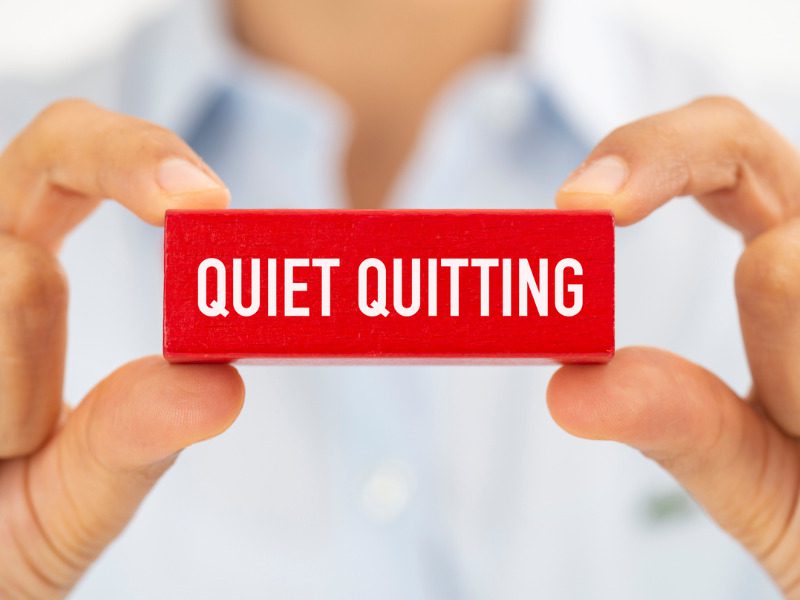Are brokers really ‘quiet-quitting’ if they are doing what they are paid to do?

HR experts question whether the new workplace trend of ‘quiet quitting’ – only doing as much work as required (no more, no less) in an attempt to restore work-life balance and prevent burnout – is aptly named and reflective of the working environment.
“If employees are doing exactly what is asked of them and what they are paid to do, then why are we referring to it as them quitting? Quiet or otherwise?” asks Amy Spurling, founder and CEO of Compt, a Boston-based HR tech start-up firm.
“If we want employees to do more, it needs to be made clear in their goal-setting,” Spurling told Canadian Underwriter. “And then people need to be compensated accordingly.”
Performance-based compensation (PBC) is certainly important for many brokerages, as evidenced by recent Canadian Underwriter National Broker Surveys. Over the past two years, 20% more broker principals have turned to PBC to improve brokers’ performance (up from 51% in 2018 to 71% in 2020).
PBC runs the gamut of a 100% commission-based model to a fully-salaried model, with hybrid compensation models (base salary and commissions) in between.
Although many brokers are not fully salaried, and thus need to survive in some form of “eat-what-you-kill” sales environment, HR experts note employees in general are starting to reject “hustle culture.” This is the idea, defined by Forbes, that that there is always more to be had – more money to make, a bigger and better title or promotion, or a higher wall to climb.
iStock.com/ONYXprj
Staying after hours every day, answering phone calls on weekends and responding to emails while on vacation are not hallmarks of a star employee, HR firm Compt contends. They are signs of someone barreling towards burnout.
“If we want fairness and equity in the workplace, we have to stop pushing people until they crash and burn,” the firm says.
Susan Hunt Stevens, founder and CEO at employee engagement company WeSpire, told CU people need to use different language when it comes to quiet quitting to prevent burnout and combat hustle culture.
Leaders should think creatively and deliberately about how to engage employees in the workplace, now that trends such as “quiet quitting” and “boomerang employees” (those who return to their former places of work) are gaining attention, she said.
Like Spurling, Stevens said doing just what’s expected and not going “above and beyond” should not be seen as quitting.
“Companies need good people who deliver on expectations and do the job they were hired to do – no more, no less,” she said. “Not everyone needs to be gunning for that promotion or driving extra-hard to get to the next level all the time. We should not equate doing what’s expected with quitting. Companies looking to retain top talent need to demonstrate that their employees are valued, heard and engaged.”
In a July 29 Metro.co.uk article, lifestyle and weekend editor Ellen Scott says “quiet quitting” could include saying no to projects outside your job description (or that you don’t want to do), leaving work on time, or refusing to answer emails outside of working hours. But it could also be as simple as a mindset shift that’s unnoticeable to anyone around you, but allows you to feel less mentally and emotionally invested in the job.
One downside is that you may shut yourself off from promotions and pay raises, particularly if colleagues are going above and beyond to exceed employer expectations, the article noted.
“If you’ve always gone above and beyond, staying late, taking on every project, and doing whatever you can to do a ‘good job’, suddenly setting a boundary is likely to provoke some surprise from your managers and colleagues,” Scott said. “That doesn’t mean you shouldn’t do it – but be prepared for some not-so-positive reactions, and consider how you will respond if you’re asked what’s going on.”
Feature image by iStock.com/solidcolours



